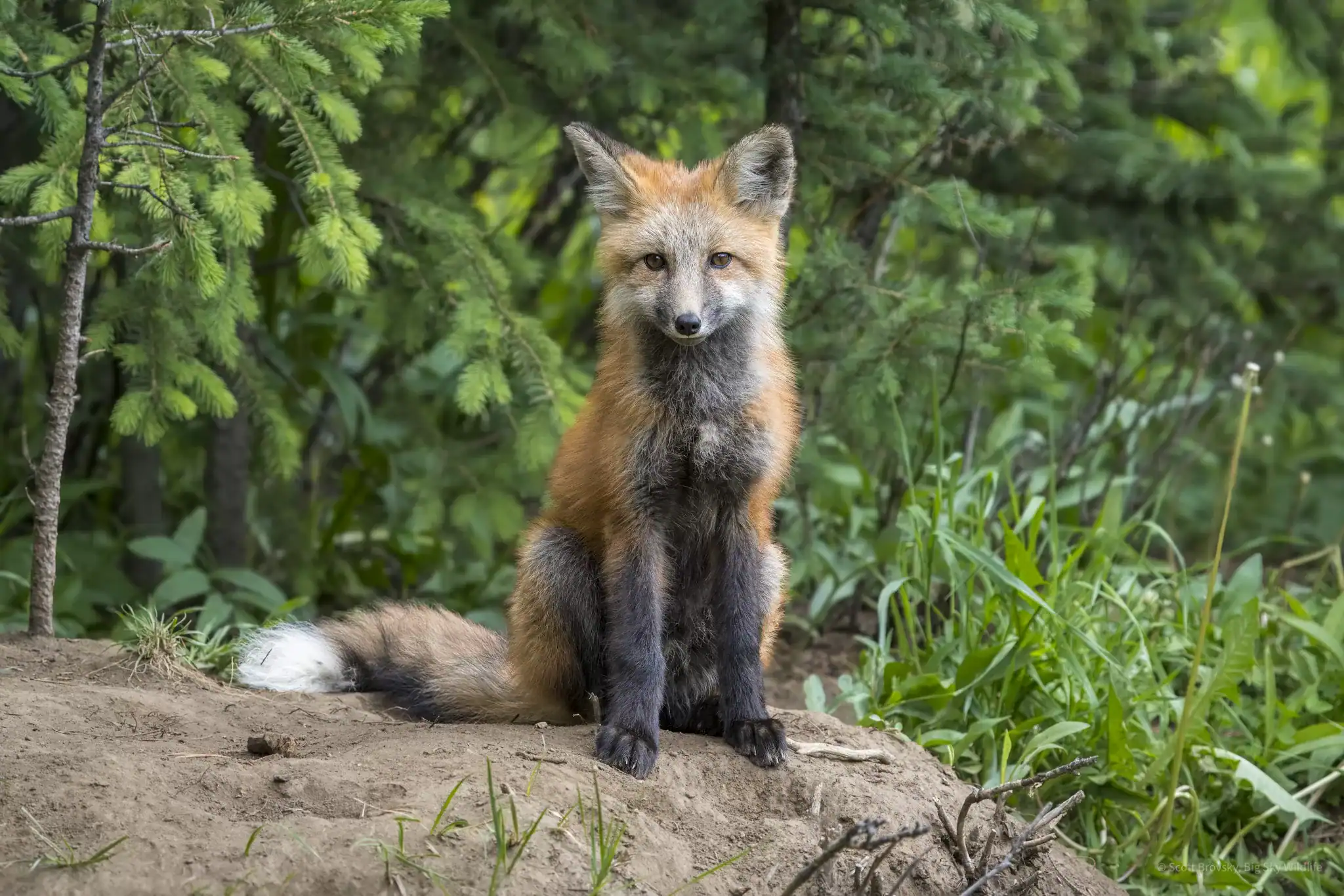Check out these two Red Fox siblings. One of them is showing some melanism, a genetic mutation that results in an increased amount of dark pigmentation, making the fur on his/her chest appear black or significantly darker than the typical red and white coloring of the species.
Melanism in red foxes, scientifically known as Vulpes vulpes, is much less common than in other species, such as the black panther, which is a melanistic form of leopards or jaguars. In red foxes, this trait is particularly rare and is the result of a recessive allele. This means that both of the parents must carry this allele to produce a melanistic offspring like this one, a genetic combination that is uncommon in the wild.

